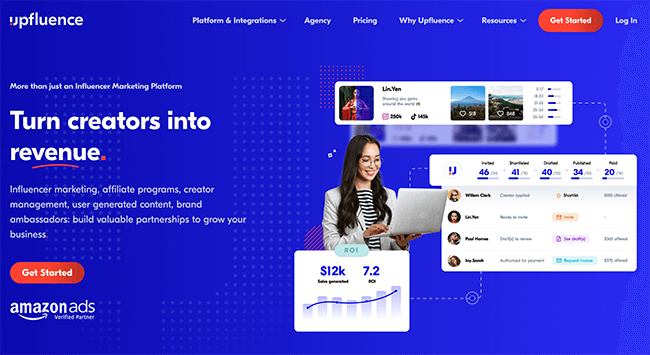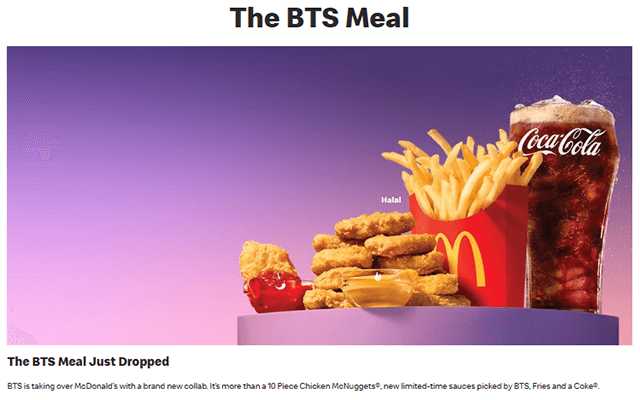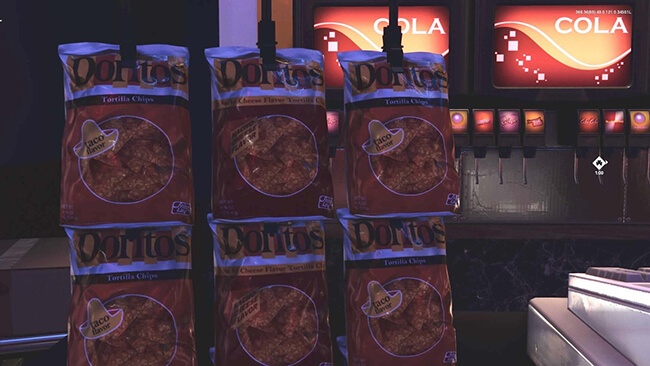How To Find Brand Collaborations: The Content Creator’s Guide

Are you ready to earn your first brand collaboration?
Sponsorship deals and partnerships with brands are intimidating achievements. Fortunately, there are plenty of ways for you to find potential brands to collaborate with and ways to achieve those collaborations.
We cover all of this in this post.
How to find brand collaborations
- Do the prep work in order to attract brand collaborations.
- Talk to brands who already engage with you and your content.
- Check out brands your competitors collaborate with.
- Research your target audience and niche in search of potential brands to work with.
- Use an influencer marketing platform.
Do the prep work
There’s a lot you can do to prepare your own brand for collaborations.
This prep work mainly revolves around making sure brands want to collaborate with you as well as making it easy to do so.
Here’s a quick reference list of things you should do before you start reaching out for brand collaborations:
- Find your target audience.
- Stay active and consistent wherever you post to.
- Cultivate a dedicated and engaged audience.
- Create a business email address specifically set up for brands to get in touch with you.
- Do affiliate marketing so brands know what it looks like to be promoted by you.
Let’s touch base on each of these briefly.
Finding your target audience
Brand collaborations are a little easier to achieve when you realize why brands actively search for content creators to work with: it allows them to expose their product or service to a built-in, highly-engaged audience cultivated by a content creator who’s earned the trust of the niche’s community.
This means if you want to secure your first brand collaboration, you need to prove to brands that you can earn them the return on investment (ROI) they’re looking for.
One way to do this is by ensuring your target audience matches the target market of the brand you’re looking to collaborate with.
The best way to do this is by finding a specific niche to target and only creating content for that niche.
Providing your niche is focused enough, Google and social media algorithms will ensure your content reaches the right target audience over time naturally.
Stay active and consistent
The sources you use for publishing are the same sources you’ll use to promote any brand you collaborate with. Therefore, it’s important you maintain a positive reputation on these sources.
One of the best ways to do this is by staying consistent on any channel you publish to, including your blog, YouTube channel and social media profiles.
To stay consistent, create high-quality content as often as you can.
Don’t fall into the trap of choosing a posting schedule and filling each slot with whatever content you can create within that time frame.
Base your posting schedule on how often you can create high-quality content instead.
Increase your engagements and metrics
Again, brands who collaborate with you want to know that you can bring them a positive ROI. The best way to prove to them that you can is by earning a high number of engagements and metrics across every channel you publish to.
This means receiving a lot of likes, comments and shares per social media post, receiving a lot of traffic per blog post, and building a large following on social media and your email list.
To increase these metrics, create content for topics your audience cares about as well as content that’s designed to get reactions. This includes content that’s funny, controversial and inspiring.
Create a business email address
Create a central point of contact for brand inquiries. This could be a simple Gmail or Outlook email address or a dedicated business email address that uses your domain.
The point is to have a special inbox set up for brand inquiries where you only respond to brand inquiries and ignore all other messages that get sent there.
Make this email address easily accessible. Put it in your social media bios as well as the top of your link in bio page.
You should also create a special page on your website for brand inquiries and include the email address on your main contact page as well.
Affiliate marketing
Hopefully, you’re already dabbling in affiliate marketing. It’s one of the best monetization strategies for small and large creators alike.
It also happens to be a gateway for brand deals and sponsorships.
When you do affiliate marketing, you gain a lot of experience in promoting brands and earning revenue by doing so.
You do a lot of trial and error to learn what sort of content works best to increase your affiliate earnings, which you can use as case studies and metrics to use to promote yourself for potential brand deals.
And in some cases, you’ll have direct contact with a brand’s partnership manager. Once you’ve proven that you can drive sales, ask them if they’d be interested in sponsoring your content or collaborating in other ways.
Get in touch with brands who already engage with you
If you already receive a decent amount of traffic for your niche, you may already have brands trying to get in touch with you.
You may have your eyes set on larger brands at the moment, but there are a lot of smaller brands who don’t have the reputations or marketing experience to grow their businesses as fast as they’d like.
So, they work with smaller influencers. It’s an advertising strategy they can afford, and it’s a quick and effective way for them to get their products exposed to their target markets.
Examine your comments and inboxes carefully, and identify brands who engage with you.
Some won’t request brand partnerships directly. They’ll simply follow you on social media and comment on your posts in hopes of getting noticed by you and your viewers.
See what brands your competitors collaborate with
We know that successful brand collaborations occur between two businesses who have matching target audiences.
This means that one of the most effective ways for you to find companies who are willing to collaborate with your brand is by researching your competitors and seeing what brands they’ve collaborated with.
This will likely involve doing a deep dive on their content. You can save time by only looking at each post’s caption or description. Sponsored posts almost always have blurbs, affiliate links and #sponsored hashtags in these sections.
Make a list of each brand your competitor has been sponsored by, then research each brand to see if they’re a good match for your own business.
Research your niche
Once you’ve identified brands who want to work with you and find brands your competitors have worked with, it’s time for you to do your own research.
Use Google as your primary source. Simply search for product keywords related to your niche, such as “fishing rods.” The search results will likely lead you to additional sources, including Amazon and niche-specific ecommerce stores.
Some results will lead directly to a brand’s website.
You can also use the help of list posts by inputting different keyword variations into Google, such as “best fishing rods” or “best fishing rods for fly fishing.”
What you’re doing here is uncovering a list of brand names that are directly related to your niche.
Do additional research on each to ensure they make high-quality products and offer high-quality services. You don’t want a brand’s poor reputation to harm your own.
Join an influencer marketing platform
Influencer marketing platforms are the best places to look for brand collaborations after you’ve exhausted every other resource on this list.
An influencer marketing platform is a hub that connects brands to influencers. They’re mostly used by brands in search of influencers to work with.
Popular platforms include those designed by brands like Upfluence, Grin and Aspire.
These platforms design their brands and marketing strategies around the brands they service.
As a creator, the way you use these platforms will be slightly different from that.
You’ll sign up or hand in an application. Then, once approved, you’ll be able to set up your profile and wait for offers to come through.
With Upfluence, potential sponsors will be able to view key metrics for your brand, including the average number of engagements you receive and how many posts you publish per day.

Types of brand collaborations
There are three primary forms of collaborations you can negotiate with brands:
- Influencer marketing
- Product collaboration
- Co-marketing
Influencer marketing
You’re likely most familiar with this form of brand collaboration. It’s the simple kind where a brand pays you to mention or demonstrate their product in your content.
It’s also the type of collaboration you’re most likely to use as an influencer. It’s a reliable way to earn revenue when you don’t have your own products.
To promote products, influencers create content with them in several ways:
- Mentioning or showing the product at the start of a post.
- Dedicating an entire post to promoting the product.
- Creating an image post featuring the product.
- Creating Instagram stories featuring the product.
- Mentioning the product on a podcast episode.
Product collaboration
This type of brand collaboration is quite different from the last.
With this type of collaboration, you and the brand you collaborate with work on a special project in which the company uses your branding on one of their products.
Examples of this collaboration include shoe companies working with athletes and influencers to create specially-designed shoes, G Fuel working with streamers to create special flavors, and even McDonald’s working with celebrities to create special meals.

If you have a pretty large following for your niche, consider pitching this type of collaboration with your favorite brands.
Not only will you earn much more than you would with influencer marketing, the brand you collaborate with will also actively promote your brand to their own marketing channels.
Co-marketing
This type of influencer marketing should be reserved for influencers who have their own products.
In this type of marketing, brands actively promote one another’s products either within their own products or by actually using another brand’s products within their own products.
PepsiCo owns Mountain Dew and Doritos. Therefore, you’ll often see these brands marketing the same products.
This includes Activision’s ongoing co-marketing deal with PepsiCo, which involves marketing the latest Call of Duty games on Mountain Dew bottles and cans and Doritos bags.
The two products have even been featured in Call of Duty maps, including the brands’ logos from the 1980s, which were featured in Call of Duty Black Ops: Cold War.

Finally, Doritos has an ongoing co-marketing collaboration with Taco Bell in which the fast food chain uses the chip company’s product as a taco shell in the Doritos Locos Tacos menu item.
You can orchestrate this type of brand collaboration with content, but it’s much more effective when it’s done with products and services.
How to send pitches for brand collaborations
Once you know what brands you want to collaborate with, contact brands directly.
Brand deal negotiations come in three stages:
- Finding the right point of contact.
- Convincing the brand you’re worth sponsoring and worth how much you’re asking for.
- Negotiating a price.
Start by sending a cold DM to the brand that’s short and to the point: tell them you want to collaborate and that your audience is a good fit for their brand.
Then, simply ask if you can get the contact information of a PR representative for their brand.
Once negotiations begin, you should send along a media kit to the brand that includes the following information:
- Usernames for every platform you publish to.
- Your website.
- Your blog.
- Demographics for your social media audience.
- Demographics for your website.
- Average impressions you receive across all social media platforms.
- Average impressions per post per social media platform.
- Average engagements across all social media platforms.
- Average engagements per post per social media platform.
- Average traffic and bounce rate you receive on your blog.
- The size of your email list.
- How you plan to promote the brand.
- Metrics for brand deals and affiliate marketing campaigns you’ve done before.
Most influencers add these details in a PDF file.
Prices are hard to negotiate since there’s no defined rule. However, you should base your price on the average impressions you receive on social media to define your CPM (cost per mile), which is cost per 1,000 impressions.
A CPM between $10 and $25 is standard for influencer marketing.
So, if you receive an average of 30,000 impressions per post and request a CPM of $15, you should ask for $450 since 1,000 goes into 30,000 30 times and 30 multiplied by $15 is $450.
Here’s the formula: take the total number of impressions you receive per social media post and multiply it by the CPM you choose. Then, divide that number by 1,000.
Final thoughts
Finding brand collaborations is a big step for content creators, especially if you consider yourself as more of a creative type than an “influencer.”
Just remember that your audience wants to believe in you and brands want to know that paid brand collaborations are worth it with you.
This means that as long as you choose trustworthy, high-quality brands and products to promote and prove that your audience is a good fit for a brand, you should be good to go.
As a few bonus tips, we recommend that you stay active on all influencer platforms new and old and that you attend industry events to get yourself noticed.
If you want to learn more about how influencers make money, read our influencer monetization guide.

